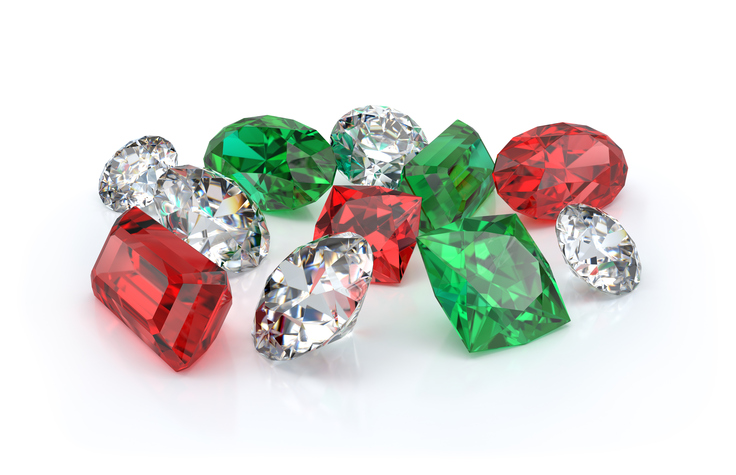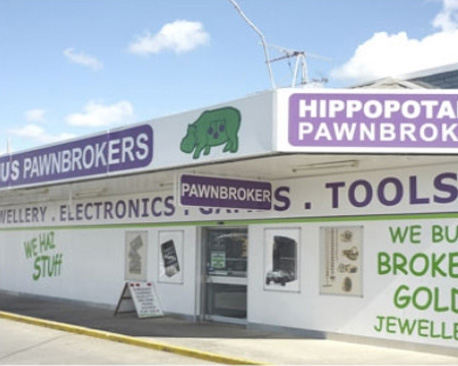Pawnbroker Trivia
A Brief History of Pawn
Pawnbroking, the lending of money (or commodities before money was coined) for items of value, has been practiced since the 14th to 15th century BC. In the western world pawnbroking existed in the Ancient Greek and Roman Empires and as the empire spread, pawnbroking went with it.
Lending money on portable security is one of the very oldest professions in the world.
Throughout history, money lenders have been both demonized and utilized by the community, royalty, and judiciary. The Jews, who were the first truly acknowledged money lenders in England, operated from around the middle of the 11th century. Yet despite the valuable services they rendered, even to the Crown itself, they were often treated with contempt.
During the 13th Century the Jewish pawnbrokers were banished from England at the decree of Edward II, and their goods and properties forfeited. The vacuum caused by the banishment of the Jews was, with the king’s blessing, quickly filled by the Lombard merchants (a moneylending group or tribe originally from Sothern Scandinavia and later from Italy) and in time all money lenders became known as Lombards.
During the siege of Baeza in the 13th Century, Queen Isabella of Spain pawned the crown jewels to fund the provisioning of their soldiers. Following, in the 14th century, about the year 1338, King Edward III pawned the crown jewels to raise money for the war with France. In the 16th century, Shakespeare, in his tragedy ‘Richard II’ wrote the words, ‘Redeem from Broking Pawn the blemished crown’. He would have been aware that historically kings had pawned the crown jewels.
For the very first time there was a written record of Broking Pawn, or the modern term, Pawn Broking.
Over the centuries, in both England and Europe, the pledge system that became almost universal arose and evolved.
Some moneylenders were known as Mont de Piete (Mountain of Piety), with origins in Europe and around the 1360’s in England, operating a system that was purely benevolent. The early ‘Mont de Piete’ established by the authority of the popes, lending money to the poor only, without interest, on the sole condition of the advances being covered by the value of the pledges. But it was obvious that an institution that costs money to manage and derives no income from its operations is limited by the extent of the voluntary financial support it can command, or it comes to a speedy end.
In the 16th century, controversy arose about the lawfulness of charging interest, which was only finally set at rest by Pope Leo X, who declared that the pawnshop was a lawful and valuable institution, and threatened with excommunication those who should presume to express doubts on the subject. In recent times, Pope St Paul said, ‘The labourer is worthy of his hire; and as money is the price of labour, he who lends money is equally entitled to be paid for the use of it’.
In 1603 England, an Act against Brokers was passed and remained on the statute-book until 1872. It was aimed at the many counterfeit brokers in London. This type of broker was evidently regarded as a fence. (Later research claimed that the proportion of articles pawned dishonestly was found to be only 1 in 14,000. Modern official statistics show that of the unredeemed pledges sold in London, less than 20 in a million are claimed by the police as stolen property.)
Several decades later in the 17th century, Charles I, introduced another act which made it clear that the pawnbroker was not deemed a respectable or trustworthy person. Ironically, a plan was mooted for setting Charles I up in the pawnbroking business. The civil war was approaching and supplies were badly needed. That the King would have benefited is obvious, since he was to enjoy two-thirds of the profits, while the working capital of £100,000 was to be found by the city of London.
The 1603 legislation also saw the acknowledgement of a pawnbroker’s signage, the three balls.
There are many myths regarding the origin of the three balls symbol; one of which is the story of Nicholas, in the 4th century, giving a poor man’s three daughters each a bag of gold so they could get married.
Saint Nicholas is the patron saint of Pawnbrokers as well as Christmas.
Centuries later, the three balls, originally believed to be three purses, was the coat of arms of the Lombards who were the very early brokers of pawn in England and Europe. The money lenders, or Lombards, as they were termed have now ceased to exist as a body but their symbol has been adopted by their successors and representatives, the modern pawnbrokers of today.
For over 35 hundred years, Pawnbrokers have been operating in one form or another and despite a rich and colourful history, have survived and are still offering their unique service in their local communities.
The Value of a Valuation: A valuation is the best measure we have for the monetary worth of a piece of jewellery. It is not a true representation of the retail price a piece sold for, but the closest approximation to the genuine cost to recreate the same piece, using the same materials, and with the same level of craftsmanship. Valuations change over time with the fluctuations of currencies, precious metals, and the demand for different gemstones due to changes in taste and fashion.
We believe that a well-informed customer can make more enlightened purchase decisions. We think an analysis of a piece of jewellery, provided by an independent third party who is an expert in their field, is the best advantage we can offer our customers.
Why Valuations?
Golden Facts
Gold, a noble metal:
Gold is prone neither to rust nor tarnish and absolutely pure gold is so soft that it can be molded with the hands. It is also an excellent conductor of heat and electricity.
An ounce of gold can be beaten into a sheet covering over 9 square metres (100 square feet) and it is said that if all the pure gold ever mined was melted, it would fit within the confines of an Olympic size swimming pool. Gold is continuously recycled through the collection and refining of ‘scrap’ gold. The best source is broken gold jewellery, but you can also find tiny amounts of gold in televisions, gaming consoles, printers, mobile phones, anything electronic, plus in cars and even smoke detectors.
In 1869, two Australians unearthed the world’s largest nugget of gold, the “Welcome Stranger”, which measured 25.4cm (10”) by 63.5cm (25”) before it was melted down. Its net weight was 72.02 kg (192 lbs 11.5 oz). At the time of the discovery, there were no scales capable of weighing a nugget this large, so it was broken into three pieces on an anvil by Dunolly-based blacksmith, Archibald Walls.
The largest nugget still in existence is the “Hand of Faith”, the largest ever discovered with a metal detector. This famous nugget was found in 1980 near Kingower in Victoria, Australia and weighs a whopping 27.21kg and is currently on display at the Golden Nugget Casino in Las Vegas. Today, the estimated value of this nugget is $US1.4 million.
The symbol for Gold is Au, which is ironic considering the world’s largest nuggets have been found right here in Australia (Au).
A Bit of Trivia:
Understanding Gold:
The ‘carats’ stamped on gold jewellery is a measure of the purity of the gold, pure gold being 24 carats. To avoid confusion, in diamonds and other precious gems, carats is a measure of weight.
You can’t really wear pure gold jewellery, it’s just too soft and pliable.
Pure gold is alloyed with other metals (copper, silver, nickel, palladium and zinc) which makes it harder, more durable and determines the colour of the gold. For example; Rose Gold is alloyed with a high percentage of copper while White Gold can be alloyed with nickel and palladium which behave as the primary bleaching agents. White Gold, a dullish cold white alloy and occasionally still displaying a slight yellowish hue, is generally plated with Rhodium, another on the short list of noble metals, to improve the finish.
Some cultures wear 24ct and 22ct or 91.66% gold jewellery on special occasions as a display of wealth, following the ancient tradition of pure gold jewellery as money and a cache of enduring value. However, it is still too soft to be worn day to day.
Generally within Australia, 18ct Gold or 750 (75% pure) is the purest gold used in Jewellery, and therefore the most expensive. As the most expensive, it is generally reserved for special items such as wedding and engagement rings or other pieces set with highly valued diamonds and precious stones.
Rarely seen in anything other than antique pieces of British origin, 15ct (62.5% pure gold) and 12ct (50% pure) has been replaced by 14ct (58.5%) and 10ct (41.6%), which is the minimum USA standard. However, 9ct (37.5% gold) is the accepted minimum in Australia. Because of Australia’s British heritage, ‘carats’ is used as our measure of purity whereas jewellery made in North America is typically marked with ‘karats’ even though the ‘carob’ seed was the ancient, original measure used for weighing precious metals (and gemstones).
Understandably, 9ct or 375 is very popular in Australia and other British Commonwealth countries. It is durable, looks good and is less expensive. Occasionally a European 8ct (33.3%) piece will be seen but it is most unusual.
Gold at its purest at 24 carats is a luminous, rich and warm colour, unmatched by any other metal. The beauty, durability and relative hardness of the most used gold alloys of 750 (18ct), 585 (14ct), 416 (10ct) and 375 (9ct) makes it very wearable and popular for today’s jewellery pieces.

A gemstone is a mineral crystal which has been cut (faceted) or polished (cabochon) and is usually used in jewellery. Also, various ‘rocks’ such as Lapis Lazuli, Opal and Jade or organic material such as Pearls, Amber and Jet are used as adornments and generally referred to as gems.
Despite a gemstone’s physical properties, the common element is beauty.
There is so very much to learn about precious and semi-precious gemstones; but basically, their hardness (very important for wearability); their beauty (who wants an ugly gem?) and rarity dictate their value and demand.
Before looking into specific gems, the issue of ‘carats’ should be addressed. We see carats in reference to both gemstones and gold, so it can be confusing. However, just remember when referring to gold that ‘carat’ is a measure of purity, or percentage of pure gold in an item. When used about gemstones, ‘carats’ is a measure of weight.
The weight of different crystals varies. Each gemstone has a certain density dependent on its unique composition. Therefore, a 1 carat Diamond would be larger than a 1 carat Sapphire, both of which would be dwarfed by a 1 carat Opal. Furthermore, coloured gemstones are cut to maximize their most desirable trait, so you may find a 1 carat Sapphire that looks bigger or smaller than the next 1 carat sapphire because it has been cut shallower or deeper. Unlike all other gemstones, Diamonds are typically cut with standard proportions.
Diamonds and Coloured Gemstones:
Diamonds and Coloured Gemstones:
Diamonds have the highest hardness of any gemstone and is the hardest known natural material. Dissimilar to many other gems, it is well-suited to daily wear because of its resistance to scratching; a fact that contributes to its popularity as the preferred gem in engagement or wedding rings, which are often worn every day. Amber is the softest gemstone, sapphire is the hardest below diamond, but a diamond is still 4 times harder than corundum (sapphire and ruby).
Most natural diamonds are between 1 billion and 3.5 billion years old. Most were formed at depths of 150 to 250 kilometers in the Earth’s mantle, although a few have come from as deep as 800 kilometers. Under high pressure and temperature, carbon-containing fluids dissolved minerals and replaced them with diamonds. Much more recently (tens to hundreds of million years ago), they were carried to the surface in volcanic eruptions.
Speaking of diamonds, most people would be familiar with the 4 C’s of Diamonds:
- Cut: Round Brilliant cut (most popular), Princess cut, Marquise cut, Oval cut, Cushion cut, Emerald cut, Pear Shaped cut.
- Clarity: FL (Flawless), FI (Internally Flawless), VVS1, VVS2 (Very, Very Slight Inclusions), VS1, VS2 (Very Slight Inclusions), SI1, SI2 (Slight Inclusions), I1 or P1, I2 or P2 (Included or Pique. Inclusions visible with the naked eye).
- Colour: D to F (Colourless, extremely rare), G to J (Near Colourless), K to Z (Noticeable Colour, showing yellow or brown, often called Champagne or Cognac). Plus, Fancy Coloured Diamonds: Red (Rarest diamonds in the world), Blue (Extremly rare), Pink (High Demand similar to Fancy Yellow), Orange and Green.
- Carat: Refers to a diamond’s weight, not the diamond’s size (as mentioned earlier).
Coloured Gemstones: The most important factor about Coloured Gemstones is their Colour. Generally, intense colours are favoured over those that are too dark or too light. Some of the elements that cause colour in a gem are incorporated into the crystal structure itself. For example, a Peridot has 12-15 percent iron content that always results in a shade of green. Other colouring elements, not part of the mineral’s normal crystal structure, provide the wide variety of colour in what otherwise would be a colourless gemstone.
Keeping in mind that it is not the colour that identifies the gemstone but its particular mineral crystal structure, for example there are different crystals that might react differently to a Chromium impurity. Both Emerald (green) and Ruby (red) are coloured by Chromium. A red Garnet and a yellow Topaz are both coloured by Iron. Copper and Manganese are also common agents producing colouring in many gems.
All gemstones, both natural or synthetic, have inclusions. An inclusion is any material that was trapped inside the gemstone crystal as it was formed either naturally or artificially. Inclusions can be other crystals, bubbles of various gas or liquid, fractures or even inclusions within inclusions and it is the inclusions that aid the gemologist in identifying the type of crystal or gemstone.
The information available on gemstones is immense and can easily be perused online for those that are interested.
Hippopotamus Pawnbrokers has a fully qualified Gemologist on staff in our Morayfield store who would be happy to answer any questions about our pre loved jewellery.




